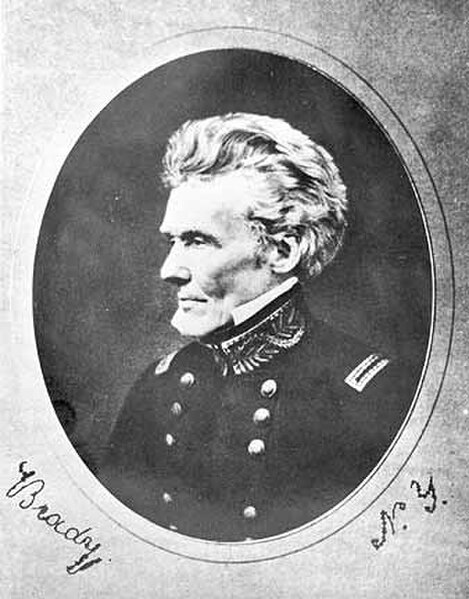Edmund Pendleton Gaines was a career United States Army officer who served for nearly fifty years, and attained the rank of major general by brevet. He was one of the Army's senior commanders during its formative years in the early to mid-1800s, and was a veteran of the War of 1812, Seminole Wars, Black Hawk War, and Mexican–American War.
Gaines in uniform, ca. 1845
Charles Balthazar Julien Févret de Saint-Mémin engraving of Gaines as a first lieutenant in 1808
John Wesley Jarvis portrait, circa 1820
Engraving of Gaines circa 1835
The Seminole Wars were a series of three military conflicts between the United States and the Seminoles that took place in Florida between about 1816 and 1858. The Seminoles are a Native American nation which coalesced in northern Florida during the early 1700s, when the territory was still a Spanish colonial possession. Tensions grew between the Seminoles and settlers in the newly independent United States in the early 1800s, mainly because enslaved people regularly fled from Georgia into Spanish Florida, prompting slaveowners to conduct slave raids across the border. A series of cross-border skirmishes escalated into the First Seminole War in 1817, when American General Andrew Jackson led an incursion into the territory over Spanish objections. Jackson's forces destroyed several Seminole and Black Seminole towns, as well as the briefly occupied Pensacola before withdrawing in 1818. The U.S. and Spain soon negotiated the transfer of the territory with the Adams-Onis Treaty of 1819.

A U.S. Marine boat expedition searching the Everglades for Seminoles during the Second Seminole War
Andrew Jackson led an invasion of Florida during the First Seminole War.
Edmund Pendleton Gaines commanded Federal troops at the Battle of Negro Fort.
The trial of Robert Ambrister and Alexander Arbuthnot during the First Seminole War







